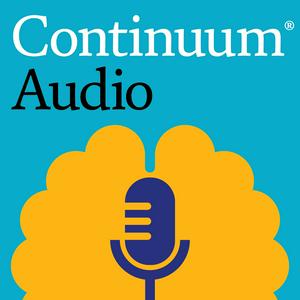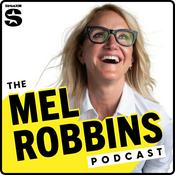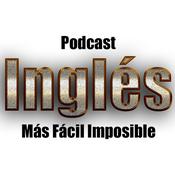Episodios disponibles
5 de 103
- The Approach to Serious-Illness Conversations With Dr. Jessica BesbrisNeurologists are privileged to act as guides for patients as they navigate the complex course of serious neurologic illnesses. Because of the impact on quality of life, personhood, and prognosis, neurologists must be able to conduct serious-illness conversations to improve rapport, reduce patient anxiety and depression, and increase the likelihood that treatment choices agree with patient goals and values. In this episode, Teshamae Monteith, MD, FAAN speaks with Jessica M. Besbris, MD, author of the article "The Approach to Serious-Illness Conversations" in the Continuum® December 2025 Neuropalliative Care issue. Dr. Monteith is the associate editor of Continuum® Audio and an associate professor of clinical neurology at the University of Miami Miller School of Medicine in Miami, Florida. Dr. Besbris is an assistant professor of neurology and internal medicine, and the director of the neuropalliative care, at Cedars-Sinai Medical Center in Los Angeles, California. Additional Resources Read the article: The Approach to Serious-Illness Conversations Subscribe to Continuum®: shop.lww.com/Continuum Earn CME (available only to AAN members): continpub.com/AudioCME Continuum® Aloud (verbatim audio-book style recordings of articles available only to Continuum® subscribers): continpub.com/Aloud More about the American Academy of Neurology: aan.com Social Media facebook.com/continuumcme @ContinuumAAN Host: @headacheMD Guest: @JessBesbris Full episode transcript available here Dr Jones: This is Dr Lyell Jones, Editor-in-Chief of Continuum. Thank you for listening to Continuum Audio. Be sure to visit the links in the episode notes for information about earning CME, subscribing to the journal, and exclusive access to interviews not featured on the podcast. Dr Monteith: Hi, this is Dr Teshamae Monteith. Today I'm interviewing Dr Jessica Besbris about her article on the approach to serious illness conversation, which is found in the December 2025 Continuum issue on neuropalliative care. How are you? Dr Besbris: I'm doing great. Thank you so much for having me here today. Dr Monteith: Well, thank you for being on our podcast. Dr Besbris: My pleasure. Dr Monteith: Why don't we start off with you introducing yourself? Dr Besbris: Sure. So, my name is Jessica Besbris. I am a neurologist with fellowship training in palliative care, and I am currently at Cedars Sinai Medical Center in Los Angeles, where I am the director of our neuropalliative care program. Dr Monteith: Excellent. So, how did you get involved in that? Dr Besbris: Like, I think, many neurologists, I always knew I wanted to be a neurologist---or, I should say, from the moment I decided to be a doctor I knew that that was the type of doctor I wanted to be, a neurologist. So, I went into medical school with the aim of becoming a neurologist. And very quickly, when I started my clinical years, I was exposed to patients who were living with very serious illnesses. And I found myself really drawn to opportunities to help, opportunities to make people feel better, opportunities to improve quality of life in situations that on the face of it seemed really challenging, where maybe it seemed like our usual treatments were not necessarily the answer or were not the only answer. And so, I pretty quickly recognized that taking care of patients with serious illness was going to be a big part of my life as a neurologist and that palliative care was the way I wanted to help these patients and families. Dr Monteith: And you mentioned you're leading the group. So, how many colleagues do you have in the program? Dr Besbris: We have a very large palliative care group, but within neuropalliative care, it's myself and one other physician, a nurse practitioner, and a social worker. Dr Monteith: Okay, well, I know you guys are busy. Dr Besbris: Yes, we are very happy to be busy. Dr Monteith: Yes. So, let's talk about the objectives of your article. Dr Besbris: Sure. So, the goal of this article is to impress upon neurologists that it really is all of our jobs as neurologists to be having these conversations with our patients who are affected with serious illness. And then, in most areas of neurology, these conversations will come up. Whether it's giving a life changing diagnosis, or talking about treatment choices, or treatment not going the way that we had hoped, or even sometimes progression of disease or end-of-life care. These topics will come up for most of us in neurology, and really, we're hoping that this article not only makes the case that neurologists can and should be having these conversations, but that there are skills that we can teach in this article and with other resources to improve the skill level and sense of confidence that neurologists have when they enter into these conversations. Dr Monteith: Great. I read that there are some developments in the field, on organizational levels, about really making these skills part of standard of care in terms of education. So, can you speak to that? Dr Besbris: Yes. So, there have been a couple of really landmark papers and changes in the educational landscape that I think have really brought neuropalliative care in general, and serious illness conversation in particular, to the forefront. So, there were the position statements released by the American Academy of Neurology in 1996 and 2022, both of which really said, hey, all neurologists should be doing this and receive training on how to have these conversations and provide this care. And the ACGME, the Accreditation Council for Graduate Medical Education, also requires neurology residency programs to learn how to communicate with patients and families, assess goals, and talk about end-of-life care. So, there's a real structural imperative now for neurologists to learn early on how to have serious illness conversations with their patients. Dr Monteith: Great. If there's anything for our listeners to get out of this conversation, what are the essential points? Dr Besbris: If you only take away one or two things from this conversation, I hope that they're that this is an awesome responsibility to be in a moment with a patient going through something challenging, to meet them in that moment with thoughtful, honest, empathic conversations about who they are and what's important to them. And that, just like any other procedure, these are skills that can be taught so that you can feel really confident and comfortable being in these moments. Dr Monteith: Excellent. Wow. Okay, I feel your energy and your empathy already. And so, why don't we just talk about skills? What is the best way to deliver tough news? I read this wonderful chart on SPIKES protocol. Dr Besbris: Yeah, the SPIKES protocol is one really well-known way to deliver serious news. And what's nice about SPIKES is it gives a mnemonic. And as neurology learners, we all love a good mnemonic to help you really center yourself when you're entering into these conversations so that you have a structured format to follow, just like with any procedure. So, the SPIKES protocol stands for Setting: so, making sure you have the right environment; Perception, or assessing what your patient or surrogate decision maker knows already so that you know where to begin; receiving an Invitation to deliver serious news. And then K stands for Knowledge, delivering in a clear and concise way the information that you want to make sure the family or patient walk away with. E for exploring Emotion; and S for really Summarizing what's been discussed and Strategizing on next steps. I think that having these kinds of conversations, it's just like being expert in anything. When you first start learning, it's helpful to have a set of very concrete steps you can follow. And you might even think through the mnemonic as you get ready to walk into that room. And as you become more expert, the flow becomes more natural. And maybe what you do before walking in to prepare is just honing what is that headline? What is that concise statement that I'm really going to give? And the rest may start to feel more natural and less protocolized. Dr Monteith: And there are a few other mnemonics. There's the NURSE mnemonic, which I like. You know, there's a balance between saying things and sounding kind of… you know, sometimes they're like, well, how could you understand what I'm going through? Have you been through something like this? And people shy away, and they're afraid to kind of be a part of these conversations. So how do we approach that with this, a NURSE mnemonic in a way that's kind of sincere? Dr Besbris: Absolutely. So, the NURSE mnemonic, unlike SPIKES, is not a step-by-step protocol. So, NURSE is a mnemonic, but you don't go through each letter and sort of give a naming statement and then an understanding statement and then a respecting statement and so on. Nurse is really a toolkit of different types of statements that we can give in response to emotions so that when you find yourself in a situation where a patient or family member is tearful, is scared, is angry, is expressing feelings, you have some phrases ready that feel authentic to you and that you feel are going to meet the moment and allow you to empathically respond to those emotions. Because until we do that, we really can't move further in this conversation with our patients and families feeling heard and respected. So, that NURSE mnemonic, those Naming, Understanding, Respecting, Supporting and Exploring statements, are really examples of statements that we can use to meet that moment with empathy and understanding and without implying that we have walked in their shoes. We want to avoid being presumptuous and really focus on just being present and empathic. Dr Monteith: So, let's just kind of run through, I think it's really important. Let's run through some of these examples. Maybe if someone's crying hysterically, how would we respond to that? Dr Besbris: So, this is an opportunity for Naming. And I made this one, I think, in the chart, a little bit obvious, meaning that we recognize when someone is crying that they are feeling probably very sad. This is an opportunity for us to name and thus normalize that emotion. I just think something as simple as, I think anyone would be really sad hearing this. These responses are not intended to fix this emotion. I'm not trying to get someone to stop crying or to, you know, necessarily not feel sad. It's really just to say, yeah, it's normal that you're feeling sad. It's okay. I'm here with you while you're feeling sad. And I'm going to be with you no matter what you're bringing to the table. Dr Monteith: Yeah. Let's go through just a couple of others. I mean, these are really good. Dr Besbris: Sure. Maybe Respecting. Dr Monteith: Yeah. So, my Dad is a fighter. Only God, not doctors, can know the future. Dr Besbris: Yeah. So, I love giving these examples with our learners because these statements, things like my Dad is a fighter or God will bring me a miracle or you don't know the answer. Only God knows what's going to happen, I think that they give a lot of doctors a feeling of confrontation, a feeling of anxiety. And I think there are a few reasons for that. And I think one of the main ones is that they're statements that imply that we as doctors are not all-powerful and it's our patients or families sort of looking for a different locus of control, whether it's internal fortitude or a higher power. They're looking to something other than us, and maybe that makes us feel a little bit uncomfortable. And I think that sometimes physicians think that these statements imply that someone doesn't even understand what's going on. But maybe they're coming to this from a place of denial. And I would argue that when someone comes to you with a statement like my dad is a fighter or, you know, I'm looking to God to bring me a miracle or to show me the future. I think that what they're really saying is, wow, I'm really hearing that things are serious, so much so that I'm reaching for these other resources to give me strength and hope. I don't think anyone asks for a miracle if they think that a miracle is not needed, if the problem is easy to fix. And so, rather than come to these types of statements from a confrontational place of I'm the doctor and I know best, I think this is a great opportunity to show some respect and give some respecting statements. Your dad is a fighter. I don't think he could have come this far without being a fighter. Or, you know, I am so grateful that you have your faith to lean on during times like these to give you strength. These are also nice opportunities for exploring statements. For example, I'm so grateful to learn more about your dad. Can you tell me what it is that he has been fighting for all of this time? Dr Monteith: I love that. It's like a follow-up, and also validating. Dr Besbris: Yeah, it's validating. And it allows us to learn a little bit more about this person and to learn, well, is he fighting for a life that we can still achieve with our interventions to lead into the next part of a conversation? Or, is God is going to bring me a miracle? Well, tell me what a miracle looks like for you. I can't tell you how many times I thought someone was going to tell me that a miracle would be cure. And sometimes that is what comes up. But other times I hear, a miracle would be, you know, my loved one surviving long enough for the rest of the family to gather. And, you know, that is certainly something we can work towards together. Dr Monteith: So, why don't we talk a little bit about approach to goals of care discussions? They are tough, and let's just put it into perspective to the critical care team. It's time, the person's been in the ICU, the family wants everything thrown at medically. And it's to the point that the assessment is that would be medical futility. Dr Besbris: Lots to unpack there. Dr Monteith: I wanted to make it hard for you. Dr Besbris: No, no, this is good! I mean, this is something- I work in a, you know, almost one thousand-bed hospital with a massive critical care building. And so, these are not unusual circumstances at all. First of all, I would just say that goals of care conversations are not only about end-of-life care. And I make that point a few different times in the article because I think when people imagine goals of care, and one of the reasons that I think clinicians may sometimes shy away from goals of care discussions, is that they think they have to be sad, they have to be scary, they have to be about death and dying. And I would argue that, really, goals of care discussions are about understanding who a person is, how they live their life, what's most important to them. Most of these conversations should be about living. How are we going to together achieve a quality of life that is meaningful for you and treatments that are going to fit your needs and your preferences? But there is a little slice of that pie in the pie chart of goals of care discussions that is in the arena of end-of-life care. For example, ICU care with, really, the highest levels of intensity of care, and having to talk about whether that still is meeting the moment from the perspective of goals as well as the perspective of efficacy. So, from the goals standpoint, I approach these conversations just like any other goals of care conversation. Usually at this point, we're speaking to family members and not our patients because in a neurocritical care unit, if someone is that sick, they probably are incapacitated. And so, it's a moment to really sit down with family and say, please tell me about the human being lying in that bed. They can't introduce themselves. What would they tell me about themselves if they could speak right now? What kinds of things were important to them in the course of their treatment? What kind of a life did they want to live or do they want to live? So that then we can reflect on, well, can our treatment achieve that? And this process is called shared decision making. This is really where we take in data from the family, who are experts in the patient, and then our own expertise in the illness and what our treatments can achieve, and then bring all of that information together to make a recommendation that aligns with what we believe is right for a particular patient. So, in the example that you gave, the extreme circumstance where someone is receiving maximal intensive care and we're starting to reach the point of futility, I think that we need to first really understand, well, what does futility mean for this particular patient? Is it that we as healthcare providers would not value living in the state this person is in? Or is it that the treatments truly cannot physiologically keep them alive or meet their stated goals? If it's the first one, that I wouldn't want to be on machines unconscious, you know, at the end of my life, well, I have to set that aside. It's really about what this patient wants. and if the family is telling you they valued every breath, every moment, and if we have care that can achieve that, we should continue to offer and recommend that care. And as healthcare providers, it is so important that we do explain when treatments are not going to be able to physiologically meet a patient's needs or achieve their goals. And that's where we can say, I'm going to continue to do everything I can, for example, to, you know, keep your loved one here for these meaningful moments. And we are at a point where performing CPR would no longer be able to restart his heart. And I just wanted to let you know that that's not something that we're going to do because I have an obligation not to provide painful medical treatments that will not work. So, my approach to futility is really different than my approach to shared decision-making because in the context of objective futility, it's not about necessarily- it's not about decision-making, it's not about shared decision-making as much as it is explaining why something is simply not going to work. Does that make sense? Dr Monteith: Absolutely. And what I love in your article is that, you know, you go beyond the skills, but also potential communication challenges---for example, patients' neurologic status, their ability to understand complex communication, or even cultural differences. So, can you speak about that briefly? Dr Besbris: Absolutely. In the world of neurological serious illness, it is incredibly common for our patients to face challenges in communication. That might be because they are aphasic, because they have a motor speech deficit, it might be because they're intubated, it might be because their capacity is diminished or absent. And so, there are a lot of challenges to keeping patients in these conversations. And in the article, I summarize what those challenges can look like and some strategies that we can use to continue to engage our patients in these conversations to the greatest extent possible and also turn to their surrogate decision makers where the patients themselves are no longer able to participate or participate fully. In terms of cultural considerations, I mean, there could be an entire article or an entire Continuum just on cultural considerations in neurology and in serious illness communication. And so, the key points that I really tried to focus on were exploring from a place of cultural humility what the beliefs and practices of a particular patient and family are in their cultural context, to ask questions to help you understand how those cultural differences may impact the way you approach these conversations. And being sensitive to folks with limited English proficiency, to ensure that we are using medical interpreters whenever possible. Dr Monteith: Excellent. Well, there's so much in the article. There's already so much that we just discussed, but our listeners are going to have to go to the article to get the rest of this. I do want to ask you to just kind of reflect on, you know, all the different cases and experiences that you have, and just, if you can give us a final remark? Dr Besbris: I can think of a number of cases that I've seen in my work as both an inpatient and outpatient neuropalliative provider where I've seen patients after strokes in the hospital with uncertain prognosis, whose families were struggling with a decision around feeding tubes. And where we have made a determination based on goals; for example, to pursue what's called a time-limited trial, to say let's place a feeding tube, let's meet again in the clinic in a few months after some rehab and let's just see, is this meeting this patient 's goals and expectations? I have been pleasantly surprised by the number of patients who have walked into my office after a period of rehabilitation who have regained the ability to eat, who are living an acceptable quality of life, and who have expressed gratitude for the work that I did in eliciting their goals, helping support their families. And some of whom have even come in and said, now that I'm doing better, I'd really like to do an advance directive to better guide my family in the future. People asking for more goals of care discussions, having seen how successful and helpful these conversations have been. Dr Monteith: Great. That's really life-altering for that patient, the family, so many people. Thank you so much for the work you do and for writing this great article and sharing all of this that we really need to learn more about. Dr Besbris: It's been a privilege. Thank you so much for talking with me today. Dr Monteith: Today I've been interviewing Dr Jessica Besbris about her article on the approach to serious illness conversation, which is found in the December 2025 Continuum issue on neuropalliative care. Be sure to check out Continuum Audio episodes from this and other issues. And thank you to our listeners for joining today. Dr Monteith: This is Dr Teshamae Monteith, Associate Editor of Continuum Audio. If you've enjoyed this episode, you'll love the journal, which is full of in-depth and clinically relevant information important for neurology practitioners. Use the link in the episode notes to learn more and subscribe. AAN members, you can get CME for listening to this interview by completing the evaluation at continpub.com/audioCME. Thank you for listening to Continuum Audio.--------21:51
- December 2025 Neuropalliative Care Issue With Dr. Maisha T. RobinsonIn this episode, Lyell K. Jones Jr, MD, FAAN, speaks with Maisha T. Robinson, MD, MSHPM, FAAN, FAAHPM, who served as the guest editor of the December 2025 Neuropalliative Care issue. They provide a preview of the issue, which publishes on December 2, 2025. Dr. Jones is the editor-in-chief of Continuum: Lifelong Learning in Neurology® and is a professor of neurology at Mayo Clinic in Rochester, Minnesota. Dr. Robinson is the Chair of the Division of Palliative Medicine and an assistant professor of neurology at Mayo Clinic in Jacksonville, Florida. Additional Resources Read the issue: continuum.aan.com Subscribe to Continuum®: shop.lww.com/Continuum Continuum® Aloud (verbatim audio-book style recordings of articles available only to Continuum® subscribers): continpub.com/Aloud More about the American Academy of Neurology: aan.com Social Media facebook.com/continuumcme @ContinuumAAN Host: @LyellJ Guest: @neuropalldoc Full episode transcript available here Dr Jones: Most of us who see patients with chronic progressive neurologic disease are aware of the value of palliative care. The focus on symptom management and quality of life is a key aspect of helping these patients. But how many of us are comfortable starting the conversation about palliative care or care at the end of life? Today we have the opportunity to speak with a leading expert on neuropalliative care, Dr Maisha Robinson, about how we can better integrate neuropalliative care into our practices. Dr Jones: This is Dr Lyell Jones, Editor-in-Chief of Continuum. Thank you for listening to Continuum Audio. Be sure to visit the links in the episode notes for information about subscribing to the journal, listening to verbatim recordings of the articles, and exclusive access to interviews not featured on the podcast. Dr Jones: This is Dr Lyell Jones, Editor-in-Chief of Continuum: Lifelong Learning in Neurology. Today I'm interviewing Dr Maisha Robinson, who is Continuum's Guest Editor for our latest issue of Continuum on neuropalliative care, and our first-ever issue fully dedicated to this topic. Dr Robinson is an assistant professor of neurology at Mayo Clinic in Florida, where she is Chair of the Division of Palliative Medicine, and she also serves on the AAN Board of Directors as Chair of the Member Engagement Committee. Dr Robinson, welcome. Thank you for joining us today. Why don't you introduce yourself to our listeners? Dr Robinson: Well, Dr Jones, thank you for having me. Really a pleasure to be here. I'm Maisha Robinson at the Mayo Clinic in Jacksonville, Florida. I spent my time as a neurohospitalist, a general palliative care physician, and a neuropalliative care physician. Dr Jones: So, this is a topic that at Continuum, we have heard about from subscribers for a long time requesting a fully dedicated issue to palliative care. And we've titled this neuropalliative Care. So, we want to respond to our subscribers and bring them content that they're interested in. I also think that palliative medicine is a big education gap in our specialty of neurology and something that we have room to improve on. So, let's start with the basics, Dr Robinson. Palliative medicine has been around for a long time, but this concept of "neuropalliative care" feels relatively new. What is neuropalliative care? Dr Robinson: That's a great question. Generally, what I would say is palliative care, first of all, is really just a specialty that focuses on trying to improve quality of life for people that have a serious or advanced medical condition. And neuropalliative care is really palliative care for people with neurologic conditions. And you'll see a number of neurologists doing neuropalliative care, but also there are internists as well, and people from other specialties, who focus on patients with neurologic disease and really trying to improve their quality of life. Dr Jones: Got it. And so, it's really the principles of palliative medicine in a specialty-specific context, which I think is important for us given the prevalence of chronic disease in our specialty. And I was obviously reading through these articles in this issue, and in the really wonderful articles, there are some themes that came up multiple times in various different articles. And one of them was obviously the importance of communication with patients and families. I think, and I'm speaking a little bit from personal experience here, many physicians feel uncomfortable bringing up the discussion of palliative care. And I'm sure that is something that reflects on your practice, too. How often do you have a patient who shows up to clinic and they ask you, why am I here? Dr Robinson: It happens all the time, because colleagues who are referring patients are nervous to tell them that they're sending them to palliative care. But we try to tell people it's really just to normalize it, to say that the palliative care team is going to see you, they're going to help with some symptoms, they're going to help you think about big picture, and they're going to be sort of an added layer of support to your team. And I think if people approach it from that standpoint, then patients and family members will say, that sounds great, I need a little extra support. Dr Jones: So, I think most neurologists have a threshold at which they would feel more comfortable having specialty support, having a palliative medicine specialist to help them in symptom management with the patient. For the palliative care that they provide themselves---and we want our subscribers to read this issue and feel more comfortable with delivering some palliative care on their own---how would you encourage them to begin that conversation? How should they initiate that conversation with a patient about working more toward palliative management of symptoms? Dr Robinson: So, one of the things we recommend is really introducing an approach to palliative care very early in the disease process. So, discussions about big picture and goals of care, discussions about who might help make medical decisions if the person can't make them for themselves. Those kinds of things can be discussed very early on. And in fact, that's palliative care. And then they can talk to patients more about the fact that as the disease progresses, there may be an additional team that can help walk along alongside the neurologist in helping you prepare for what's to come. You know, I think it's very important for patients and family members who feel like you're not abandoning them, but you're adding additional resources. And so, I like the way that we often will suggest to people to say partner or collaborate or bring in extra resources with the palliative care team. I think patients and family members will respond to that. Dr Jones: Yeah. So, by talking about it early, you kind of, at least, help to avoid that problem of the patient perceiving the introduction of palliative care as the quote-unquote "giving-up problem." Is that right? Dr Robinson: Correct. Because we also don't want to see people who are just being referred to us for end-of-life care. Palliative care is about much more than that. But if patients will Google palliative care, they may see hospice come up. And so, introducing the concept early and discussing some palliative topics early will allow the patient and family members to think that, okay, this isn't because I'm at the end of life. This is just because my clinician wants to make sure that I have all the bases covered. Dr Jones: This was also mentioned in several of the articles, the studies that have shown how frequently palliative care is initiated very near the end of life, which is usually, I think, perceived as a missed opportunity, right? To not wait so long to take advantage of what palliative care has to offer. Dr Robinson: That's correct. And the benefit of palliative care is that oftentimes we work alongside an interdisciplinary team, a team that could be quite helpful to patients and their support systems throughout the course of the disease. So, we have chaplains, we have nurses, we often have other clinicians, advanced practice providers as well, who work with us. We have spiritual advisors as well. And the patients and family members could benefit from some of those resources throughout the course of the disease. Who they might need to meet with may vary depending on what the disease is and how they're doing. But there's definitely some benefit to having a longitudinal relationship with the palliative care team and not just seeking them out at the end of life. Dr Jones: So- that's very helpful. So, it'll obviously vary according to an individual provider's level of comfort, right, where they're comfortable providing certain palliative management care versus when they need to have some assistance from a specialist. Are there types of care or are there certain thresholds that you say, wow, this patient really should go see a specialist in palliative medicine or neuropalliative care? Dr Robinson: So, I think that if there are, for instance, refractory symptoms, where the neurologist has been working with a patient for a while trying to manage certain symptoms and they're having some challenges, that person may benefit from being referred to palliative care. If patients are being hospitalized multiple times and frequently, that may suggest that a good serious-illness conversation may be necessary. If there are concerns about long-term artificial nutrition, hydration, or functional and cognitive decline, then some of those patients have benefited from palliative care. Not only the patient, but also the caregiver, because our team really focuses on trying to make sure that we're walking through the course of disease with these patients to ensure that all of the needs are managed both for the patient and the family member. Dr Jones: Got it. And that's very helpful. And I know that we talk about a lot of these decisions happening in an ideal environment when there's good access to the neurologist and good access to a palliative medicine specialist or even a neuropalliative medicine expert. In your general sense, I- and maybe we'll talk a little bit here in a minute or two about the growing interest in neuropalliative care. But in terms of access, in terms of availability of really, truly neuropalliative expertise, what is your sense of how widely available that is in the US? Dr Robinson: There's a shortfall of palliative care clinicians in the United States. Everybody who needs a palliative care clinician won't have access to one. And I think your point about the primary palliative care is so important. That's really what we encourage all clinicians, neurologists, neurosurgeons, even, physiatrists, the neurology care team members need to be comfortable with at least initiating some of these conversations. Because, to your point, not everyone's going to have access to a palliative care physician. But by reading issues such as this one, attending some courses---for instance at the American Academy of Neurology meetings---, doing some online trainings, those types of things can be helpful to bring any neurology clinician up to speed who certainly may not have access to a palliative care physician. Dr Jones: So, I know---and this is in part from my own conversations with patients in my own practice---there are a number of fears that patients have when they have a chronic disease, something that's progressive or something that we don't have a curative treatment for. But I think one of, if not the most common fear among patients is pain, and pain that can't be managed adequately during the course of chronic illness or at the end of life. One of the interesting concepts that I saw mentioned in a few of the articles in this issue is this concept of total pain. So, not just the somatic pain that I think we tend to think of as clinicians and patients tend to think of as patients, but a more holistic definition of pain. Walk us through that and how that relates to palliative medicine. Dr Robinson: So, Dame Cicely Saunders, the modern-day founder of palliative medicine, really described this biopsychosocial model for pain. And so, you're right, it's not just physical pain, but it's psychological pain, it's spiritual pain. And oftentimes when we are taking care of patients with neurologic disease, they may have some physical pain, but a lot of them are thinking about, for instance, the things that they will miss, which may cause some internal discomfort. Things that they're grieving, the life they thought they were going to have, the person that they used to be, the life they used to have, and what they anticipated their life as being. And some of that can cause people to have not only the spiritual discomfort, but also some psychological discomfort as well. And so, when we're thinking about how to provide rehensive care to these patients, we have to be thinking about all of these aspects. Dr Jones: It's really helpful. And I guess the more you can identify those, the more you can either help yourself or find the right expert to help the patient. I thought that was an interesting expansion of, of my view of how to think about pain. And another observation that came up in several of the articles was a lack of high-quality clinical trial evidence to inform a lot of the interventions in neuropalliative care. Some of them are common-sense, some of them are based on clinical experience or expert advice. In your own practice, if there was one key knowledge gap to close---in other words, if there was one pivotal trial that we could do to answer one question in helping patients with chronic neurologic disease---what would you say is the main gap? Dr Robinson: I think the real gap is, who needs palliative care and when? That seems very simple. We have tried things such as automatic triggers for palliative care, for instance, in patients with ALS, or we've said that maybe all glioblastoma patients should see palliative care. But is that true? Are we utilizing the resources in the best possible way that we can? We're not sure. And so, you'll see these practices doing things all a little bit different because we don't have a best practice and it's not really standardized about when people should see palliative care, or why, for instance, they should see palliative care, or who should see palliative care. And I think if we could help drill that down, we can provide some better guidance to our colleagues about when and why and who should see palliative care. Dr Jones: It's a really kind of a fundamental, foundational, who needs the service to begin with or who needs to care. Okay, that's- that is a big gap. So, one of the interesting concepts that I read- and it was in Benzi Kluger's article on neuropalliative care for patients who have movement disorders. I think it's a concept that is interesting, really, maybe in the management of patients with a lot of different chronic, progressive neurologic diseases. And it's this idea of stealing victories or bringing joy to patients. In other words, not just managing or trying to minimize some of the negative aspects or symptoms of disease, but looking for opportunities to bring something positive to their experience or improving their quality of life. Tell us a little more about that, because I think that's something patients would appreciate, but I think neurologists would appreciate that, too. Dr Robinson: Dr Kluger loves to talk about sustaining and finding joy in patients who have really serious or advanced neurologic conditions. He likes to talk about stealing victories, which can relate to the fact that patients and their loved ones can find even some benefit despite having a serious or advanced neurologic condition. Neurologists and neurology clinicians also can steal victories in their patients when they notice, for instance, that they've gained a new skill, and they've lost a skill that they used to love because of the advancing disease. And this is just an opportunity for not only the patients and family members, but also the care providers to recognize that in the midst of decline, there are positive things to be found. Dr Jones: I think it gives patients a sense of maybe reclaimed autonomy when they can say, well, there's maybe nothing I can do to cure this disease in the conventional sense, but I can maybe go on this trip with my family, which has been something I've always wanted to do. Or, I can do these things, so I can attend certain events that I want to. And I think that autonomy and independence aspect of that, I think that I think that was really meaningful and something that I'm going to bring back to my own practice in my care of patients who have ALS, for example. When you think about neuropalliative care---and you've been a leader in this area, Dr Robinson---what do you think the biggest change in neuropalliative care has been over the last few years? Dr Robinson: I think there's a growing cohort of people who are recognizing that there is some benefit in having dedicated specialists who focus on palliative care for patients with neurologic disease. When I said I was going to do neuropalliative care, somebody asked me, why would a neurologist be interested in palliative care? Over the last decade and a half, we've seen that shift. And not only are our colleagues recognizing the benefit, but also patients and caregivers are. Some are even asking for palliative care. I think people are recognizing that not only having their primary neurologist or neurology clinician taking care of them, they have this extra layer of support, and this extra team really focused on quality-of-life issues can be beneficial. Dr Jones: So, one of the things that I think you and I have both seen, Dr Robinson, is a growing interest among neurology trainees in palliative medicine. And maybe that's anecdotal, but in my own practice, I've seen more and more trainees express an interest in this. For neurology residents who are interested in this as a component of or maybe a focus of their career, what would you recommend to them? How should they go about this? Dr Robinson: Yes, it used to be that every neurology resident interested in palliative care would call me or email me or send me a message, but now there are so many that I can't keep up. We're excited about the growing number of people interested in neuropalliative care. What I would say to those people is that you can really try to hone your skills by, for instance, doing a rotation with the palliative care team at your hospital, if there is one. If there isn't one, you might even ask to spend some time with the local hospice agency, which may be helpful to you. If you're attending some of the national meetings---for instance, the American Academy of Neurology meeting---you may want to go to a course and learn a little bit about palliative care. There are a couple that are offered every year. There is an education opportunity for education in palliative and end-of-life care as well. And so, there are a number of resources that you can find in addition to this issue of Continuum as well. Dr Jones: I find it gratifying that trainees ask about this. And I'm sorry, I think I've probably sent a bunch of trainees your way for advice about this, and you've been incredibly generous with your time and expertise. So, I find it very gratifying that our neurology trainees are interested in this area, because it's an important area of medicine. It's also probably a challenging practice just from the cognitive load and the emotional load of caring for patients who are moving through a progressive illness. What is your thinking about how to have a sustainable career in palliative medicine? What is your approach to that? Is it for everyone? Dr Robinson: Yeah, the issue with palliative care is that we do see some very challenging situations, and frankly some very sad situations. But I actually love what I do because I think that we're helping patients and their family members during very, very difficult times. I feel like this is why I went to medical school, to try to be there for people when they need me the most. The way that I think about it is, the patients and family members will be going through this anyway. We're trying to help improve their quality of life as they're going through it. And what you might find interesting is that these patients are so grateful. And their loved ones, they're so grateful. Even if they're nearing the end of life, just to have someone who's helping them see that, for instance, the pain could be better, or that they have more resources for the loved ones to be able to take care of them. And so, I think that helps sustain us, realizing that we are really having a positive benefit on the patients and also their family members. Dr Jones: Well, I think that's a great point to end on. And these are patients who need help. Even if we don't have a curative therapy, they do need support. And that's an important service and a function and an important facet of our profession. So, Dr Robinson, I want to thank you for joining us, and I want to thank you for such a great discussion of neuropalliative care. I learned a lot from our conversation today. I've learned a lot reading the articles and the experts that you put together. This is an important topic. I'm really grateful to you to having assembled this team of expert authors and put together an issue that I think will be really important for not only our junior readers, but also our more experienced subscribers as well. Dr Robinson: Thank you, Dr Jones, for the opportunity. Dr Jones: Again, we've been speaking with Dr Maisha Robinson, Guest Editor of Continuum's most recent issue and first issue fully dedicated to neuropalliative care. Please check it out, and thank you to our listeners for joining today. Dr Monteith: This is Dr Teshamae Monteith, Associate Editor of Continuum Audio. If you've enjoyed this episode, you'll love the journal, which is full of in-depth and clinically relevant information important for neurology practitioners. Use the link in the episode notes to learn more and subscribe. Thank you for listening to Continuum Audio.--------21:57
- Dystrophinopathies With Dr. Divya JayaramanDystrophinopathies are heritable muscle disorders caused by pathogenic variants in the DMD gene, leading to progressive muscle breakdown, proximal weakness, cardiomyopathy, and respiratory failure. Diagnosis and management are evolving areas of neuromuscular neurology. In this episode, Kait Nevel, MD, speaks with Divya Jayaraman, MD, PhD, an author of the article "Dystrophinopathies" in the Continuum® October 2025 Muscle and Neuromuscular Junction Disorders issue. Dr. Nevel is a Continuum® Audio interviewer and a neurologist and neuro-oncologist at Indiana University School of Medicine in Indianapolis, Indiana. Dr. Jayaraman is an assistant professor of neurology and pediatrics in the division of child neurology at the Columbia University Irving Medical Center in New York, New York. Additional Resources Read the article: Dystrophinopathies Subscribe to Continuum®: shop.lww.com/Continuum Earn CME (available only to AAN members): continpub.com/AudioCME Continuum® Aloud (verbatim audio-book style recordings of articles available only to Continuum® subscribers): continpub.com/Aloud More about the American Academy of Neurology: aan.com Social Media facebook.com/continuumcme @ContinuumAAN Host: @IUneurodocmom Full episode transcript available here Dr Jones: This is Dr Lyell Jones, Editor-in-Chief of Continuum. Thank you for listening to Continuum Audio. Be sure to visit the links in the episode notes for information about earning CME subscribing to the journal, and exclusive access to interviews not featured on the podcast. Dr Nevel: Hello, this is Dr Kate Nevel. Today I'm interviewing Dr Divya Jayaraman about her article on dystrophinopathies, which she wrote with Dr Partha Ghosh. This article appears in the October 2025 Continuum issue on muscle and neuromuscular junction disorders. Divya, welcome to the podcast, and please introduce yourself to the audience. Dr Jayaraman: Thank you so much, Dr Nevel. My name is Divya, and I am an assistant professor of Neurology and Pediatrics at Columbia University Irving Medical Center, and also an attending physician in the Pediatric Neuromuscular program there. In that capacity, I see patients with pediatric neuromuscular disorders and also some general pediatric neurology patients and also do research, primarily clinical research and clinical trials on pediatric neuromuscular disorders. Dr Nevel: Wonderful. Thank you for sharing that background with us. To set us on the same page for our discussion, before we get into some more details of the article, perhaps, could you start with some definitions? What comprises the dystrophinopathies? What are some of the core features? Dr Jayaraman: So, the dystrophinopathies, I like that term because it is a smaller subset from the muscular dystrophies. The dystrophinopathies are a spectrum of clinical phenotypes that are all associated with mutations in the DMD gene on chromosome X. So, that includes DMD---or, Duchenne muscular dystrophy---, Becker muscular dystrophy, intermediate muscular dystrophy (which falls in between the two), dilated cardiomyopathy, asymptomatic hyperCKemia, and manifesting female carriers. In terms of the core features of these conditions, so, there's some variability, weakness being prominent in Duchenne and also Becker. The asymptomatic hyperCKemia, on the other hand, may have minimal symptoms and might be found incidentally by just having a high CK on their labs. They all will have some degree of elevated CK. The dilated cardiomyopathy patients, and also the Becker patients to a lesser degree, will have cardiac involvement out of proportion to skeletal muscle involvement, and then the manifesting carriers likewise can have elevated CK and prominent cardiac involvement as well as some milder weakness. Dr Nevel: Now that we have some definitions, for the practicing neurologists out there, what do you think is the most important takeaway from your article about the dystrophinopathies? Dr Jayaraman: I like this question because it suggests that there's something that, really, any neurologist could do to help us pick up these patients sooner. And the big takeaway I want everyone to get from this is to check the CK, or creatine kinase, level. It's a simple, cheap, easy test that anyone can order, and it really helps us a lot in terms of setting the patient on the diagnostic odyssey. And in terms of whom you should be thinking about checking a CK in, obviously patients who present with some of the classic clinical features of Duchenne muscular dystrophy. This would include young boys who have toe walking, as they're presenting, sign; or motor delayed, delayed walking. They may have calf hypertrophy, which is what we say nowadays. You might have seen calf pseudohypertrophy in your neurology textbooks, but we just say calf hypertrophy now. Or patients can often have a Gowers sign or Gowers maneuver, which is named after a person called Gowers who described this phenomenon where the child will basically turn over and use their hands on the floor to stand up, usually with a wide-based gait, and then they'll sort of march their hands up their legs. That's the sort of classic Gowers maneuver. There are modified versions of that as well. So, if anyone presents with this classic presentation, for sure the best first step is to check a CK. But I would also think about checking a CK for some atypical cases. For example, any boy with any kind of motor or speech delay for whom you might not necessarily be thinking about a muscle disorder, it's always good practice to check a CK. Even a boy with autism for whom you may not get a good clinical exam. This patient might present to a general pediatric neurology clinic. I always check a CK in those patients, and you'll pick up a lot of cases that way. For the adult folks in particular, the adult neurologist, a female patient could show up in your clinic with asymptomatic hyperCKemia. And I think it's an important differential to think about for them because this could have implications not just for their own cardiac risks, but also for their family planning. Dr Nevel: So, tell us a little bit more about the timing of diagnosis. Biggest takeaway: check a CK if this is anywhere on your radar, even if somewhat of an atypical case. Why is it so important to get kiddos started on that diagnostic odyssey, as you called it, early? Dr Jayaraman: This is especially important for kids because if they especially get a Duchenne muscular dystrophy diagnosis, you might be making them eligible for treatments that we've had for some time, and also treatments that were not available earlier that hinge on making that diagnosis. So, for example, people may be skeptical about steroids, but there's population data to suggest that initiation and implementation of steroids could delay the onset of loss of ambulation as much as three years. So, you don't want to deprive patients of the chance to get that. And then all the newer emerging therapies---which we'll be talking about later, I'm sure---require a Duchenne muscular dystrophy diagnosis. So, that's why it's so important to check a CK, have this on your radar, and then get them to a good specialist. Dr Nevel: I know that you alluded already, or shared a few of the kind of exam paroles or findings among patients with dystrophinopathy. But could you share with us a little bit more how you approach these patients in the clinic who are presenting with muscle weakness, perhaps? And how do you approach this or think about this in terms of ways to potentially differentiate between a dystrophinopathy versus another cause of motor weakness or delay? Dr Jayaraman: It's helpful to think through the neuraxis and what kinds of disorders can present along that neuraxis. A major differential that I'm always thinking about when I'm seeing a child with proximal weakness is spinal muscular atrophy, which is a genetic anterior horn cell disorder that can also present in this age group. And some of the key differences there would be things like reflexes. So, you should have dropped reflexes in spinal muscular atrophy. In DMD, surprisingly, they might have preserved Achilles reflexes even if their patellar reflexes are lost. It may only be much later that they go on to lose their Achilles reflex. So, if you can get an Achilles reflex, that's quite reassuring, and if you cannot, then you need to be thinking about spinal muscular atrophy. They can both have low muscle tone and can present quite similarly, including with proximal weakness, and can even have neck flexion weakness. So, this is an important distinction to make. The reason for that is, obviously there are treatments for both conditions, but for spinal muscular atrophy, timing is very, very important. Time is motor neurons, so the sooner you make that diagnosis the better. Other considerations would be the congenital muscular dystrophies. So, for those that they tend to present a lot younger, like in infancy or very early on, and they can have much, much higher CKS in that age range than a comparable Duchenne or Becker muscular dystrophy patient. They can also have other involvement of the central nervous system that you wouldn't see in the dystrophinopathies, for example. My mnemonic for the congenital muscular dystrophies is muscle-eye-brain disease, which is one of the subtypes. So, you think about muscle involvement, eye involvement, and brain involvement. So, they need an ophthalmology valve. They can have brain malformations, which you typically don't see in the dystrophinopathies. I think those are some of the major considerations that I have. Obviously, it's always good to think about the rest of the neuraxis as well. Like, could this be a central nervous system process? Do they have upper motor neuron signs? But that's just using all of your exam tools as a neurologist. Dr Nevel: Yeah, absolutely. So, let's say you have a patient in clinic and you suspect they may have a dystrophinopathy. What is your next diagnostic step after your exam? Maybe you have an elevated CK and you've met with the patient. What comes next? Dr Jayaraman: Great question. So, after the CK, my next step is to go to genetics. And this is a bit of a change in practice over time. In the past we would go from the CK to the muscle biopsy before genetic testing was standard. And I think now, especially in kids, we want to try and spare them invasive procedures where possible. So, genetic testing would be the next step. There are a few no-charge, sponsored testing programs for the dystrophinopathies and also for some of the differential diagnosis that I mentioned. And I think we'll be including links to websites for all of these in the final version of the published article. So, those are a good starting point for a genetic workup. It's really important to know that, you know, deletions and duplications are a very common type of mutation in the DMD gene. And so, if you just do a very broad testing, like whole exome, you might miss some of those duplications and deletions. And it's important to include both checking for duplications and deletions, and also making sure that the DMD gene is sequenced. So always look at whatever genetic test you're ordering and making sure that it's actually going to do what you want it to do. After genetics, I think that the sort of natural question is, what if things are not clear after the genetics for some reason? We still use biopsy in this day and age, but we save it for those cases where it's not entirely clear or maybe the phenotype is a little bit discordant from the genotype. So, for mutations that disrupt the reading frame, those tend to cause Duchenne muscular dystrophy, whereas mutations that preserve the reading frame tend to cause Becker muscular dystrophy. There are some important exceptions to this, which is where muscle biopsy can be especially helpful in sorting it out. So, for example, there are some early mutations early in the DMD gene where, basically, they find an alternate start codon or an initiation codon to continue with transcription and translation. So, you end up forming a largely functional, somewhat truncated protein that gives you more of a milder Becker phenotype. On the other hand, you can have some non-frameshift or inframe mutations that preserve the reading frame, but because they disrupt a very key domain in the protein that's really crucial for its function, you can actually end up with a much more severe Duchennelike phenotype. So, for these sorts of cases, you might know a priori you're dealing with them, but might just be a child who is who you think has DMD has a mutation that's showed up on testing. There isn't enough in the literature to point you one way or another, but they look maybe a little milder than you would expect. That would be a good kid to do a biopsy in because there are treatment decisions that hinge on this. There are treatments that are only for Duchenne that someone with a milder phenotype would not be eligible for. Dr Nevel: So, that kind of stepwise approach, but maybe not all kids need a muscle biopsy is what I'm hearing from you. If it's a mutation that's been well-described in the literature to be fitting with Duchenne, for example. Dr Jayaraman: Absolutely. Dr Nevel: So, after you confirm the diagnosis through genetic testing---and let's say, you know, whether or not you do a muscle biopsy or not, after you know the diagnosis is a dystrophinopathy---how do you counsel the families and your patients? What are the most important points to relay to families, especially in that initial phase where the diagnosis is being made? Dr Jayaraman: This is a lot of what we do in pediatric neurology in general, right? So, I actually picked up this approach from the pediatric hematology oncology specialists at Boston Children's. They had this concept of a day-zero conversation, which is the day that you disclose the life-changing diagnosis or potentially, at some point, terminal diagnosis to a family. And some of the key components of that are a not beating around the bush, telling them what the diagnosis is, and then letting them have whatever emotional response they're going to have in the moment. And you may not get much further than that, but honestly, you want them to take away, this is what my child has. I did not do anything to cause this, nor could I have done anything to prevent this. Because often for these genetic conditions, there's a lot of guilt, a lot of parental guilt. So, you want to try and assuage that as much as possible. And then to know that they're not going to be alone on this journey; that, you know, they don't have to have it all figured out right then, but we can always come back and answer any questions they have. There's going to be a whole team of specialists. We're going to help the family and the kid manage this condition. Those are sort of my big takeaways that I want them to get. Dr Nevel: Right. And that segues into my next question, which is, who is part of that team? I know that these teams that help take care of people with dystrophinopathies and other muscle disorders can be very large teams that span multiple specialists. Can you talk a little bit more about that for this group of patients? Dr Jayaraman: Of course. So, the neuromuscular neurologist, really, our role is in coordinating the diagnosis, the initiation of any disease-specific treatments, and coordinating care with a whole group of specialists. So, we're sort of at the center of that, but everyone else is equally important. So, the other specialists include physical therapists; occupational therapists; rehab doctors or physiatrists; orthotists who help with all of the many braces and other devices that they might need, wheelchairs; pulmonology, of course, for managing the respiratory manifestations of this. It becomes increasingly important over time, and they are involved early on to help monitor for impending respiratory problems. Cardiac manifestations, this is huge and something that you should be thinking about even for your female carriers, the mother of the patient you're seeing in the clinic, or your patient who comes to adult clinic with asymptomatic hyperCKemia. if you end up making a diagnosis of DMD carrier for those patients, or if you make a Becker diagnosis, the cardiac surveillance is even more important because the cardiac involvement can be out of proportion to the skeletal muscle weakness. And of course, extremely important for the Duchenne patients as well. Endocrinologists are hugely important because in the course of treating patients with steroids, we end up giving them a lot of iatrogenic endocrinologic complications. Like they might have delayed puberty, they might have loss of growth, of height; and of course metabolic syndrome. So, endocrinology is hugely important. They're also important in managing things like fracture prevention, osteoporosis, prescribing bisphosphonates if necessary. Nutrition and GI are also important, not just later on when they might need assistance to take in nutrition, whether that's through tube feeds, but also earlier on when we're trying to manage the weight. Orthopedics, of course, for the various orthopedic complications that patients develop. And then finally, a word must be said for social work and behavioral and mental health specialists, because a lot of this patient population has a lot of mental health challenges as well. Dr Nevel: After you give the diagnosis, you've counseled the patient and families and you've had those kind of initial phase discussions, the day-zero discussion, when you start getting into discussions or thoughts about management, disease-specific medication. But what are the main categories of the treatment options, and maybe how do you kind of approach deciding between treatment options for your patients? Dr Jayaraman: So, there are two broad categories that I like to think about. So, one is the oral corticosteroids and oral histone deacetylase, or HDAC inhibitors, which share the common characteristic that they are non-mutation specific. And within corticosteroids, patients now have a choice between just Prednisone or Prednisolone, or Deflazacort or Vermilion. The oral HDAC inhibitors are newly FDA-approved as a nonsteroidal therapy in addition to corticosteroids in DMD patients above six years of age. I would say we're in the early phase of adoption of this in clinical practice. And then the other big category of treatment options would be the genetic therapies as a broad bucket, and this would include gene therapy or gene replacement therapy, of which the most famous is the microdystrophin gene therapy that was FDA-approved first on an accelerated approval basis for ages four to eight, and then a full approval in that age group as well as an accelerated approval for all comers, essentially, with DMD. This is obviously controversial. Different centers approach this a bit differently. I think our practice at our site has been to focus on the ambulatory population, just thinking about risk versus benefit, because the risks are not insignificant. So really this is something that should be done by experienced sites that have the bandwidth and the wherewithal to counsel patients through all of this and to manage complications as they arise with regular monitoring. And then another class that falls within this broader category would be the Exon-skipping therapies. So as the name suggests, they are oligonucleotides that cause an Exon to be skipped. The idea is, if there is a mutation in a particular Exon that causes a frame shift, and there's an adjacent Exon that you can force skipping of, then the resulting protein, when you splice the two ends together, will actually allow restoration of the reading frame. I think the picture I want to paint is that there's a wide range of options that we present to families, not all of which everyone will be eligible for. And they all have different risk profiles. And I really think the choice of a particular therapy has to be a risk-benefit decision and a shared decision-making process between the physician and the family. Dr Nevel: What is going on in research in this area? And what do you think will be the next big breakthrough? I know before we started the recording you had mentioned that there's a lot of things going on that are exciting. And so, I'm looking forward to hearing more. Dr Jayaraman: Of course. So, I'll be as quick as I can with this. But I mentioned that next-generation Exon skipping therapies, I think the hope is that they will be better at delivering the Exon skipping to the target tissue and cells and that they might be more efficacious. I'm also excited about next-generation gene therapies that might target muscle more specifically and hopefully reduce the off-target effects, or combination use of gene therapies with other immunosuppressive regimens to improve the safety profile and maybe someday allow redosing, which we cannot do currently. Or potentially targeting the satellite cells, which are the muscle stem cells, again, to improve the long term durability of these genetic therapies. Dr Nevel: That's great, thank you for sharing. Thank you so much for talking to me today about your article. I really enjoyed learning more about the dystrophinopathies. Today I've been interviewing Dr Divya Jayaraman about her article on the dystrophinopathies, which she wrote with Dr Partha Ghosh. This article appears in the October 2025 Continuum issue on muscle and neuromuscular junction disorders. Please be sure to check out the Continuum Audio episodes from this and other issues. Also, please read the Continuum articles for more details than what we were able to get to today during our discussion. Thank you, as always, so much to the listeners for joining us today, and thank you, Divya, for sharing all of your knowledge with us today. Dr Jayaraman: Thank you so much for having me on the podcast. Dr Monteith: This is Dr Teshamae Monteith, Associate Editor of Continuum Audio. If you've enjoyed this episode, you'll love the journal, which is full of in-depth and clinically relevant information important for neurology practitioners. Use the link in the episode notes to learn more and subscribe. AAN members, you can get CME for listening to this interview by completing the evaluation at continpub.com/audioCME. Thank you for listening to Continuum Audio.--------25:21
- Myotonic Dystrophy With Dr. Paloma Gonzalez PerezMyotonic dystrophies (DM), in addition to muscle weakness and myotonia, are associated with broad and variable multiorgan involvement. Neurologists need to recognize DM to ensure prompt diagnosis, effective symptom management, and prevention of life-threatening events. In this episode, Casey Albin, MD, speaks with Paloma Gonzalez Perez, MD, PhD, author of the article "Myotonic Dystrophy" in the Continuum® October 2025 Muscle and Neuromuscular Junction Disorders issue. Dr. Albin is a Continuum® Audio interviewer, associate editor of media engagement, and an assistant professor of neurology and neurosurgery at Emory University School of Medicine in Atlanta, Georgia. Dr. Gonzalez Perez is an assistant professor at Harvard Medical School in Boston, Massachusetts. Additional Resources Read the article: Myotonic Dystrophy Subscribe to Continuum®: shop.lww.com/Continuum Earn CME (available only to AAN members): continpub.com/AudioCME Continuum® Aloud (verbatim audio-book style recordings of articles available only to Continuum® subscribers): continpub.com/Aloud More about the American Academy of Neurology: aan.com Social Media facebook.com/continuumcme @ContinuumAAN Host: @caseyalbin Full episode transcript available here Dr Jones: This is Dr Lyell Jones, Editor-in-Chief of Continuum. Thank you for listening to Continuum Audio. Be sure to visit the links in the episode notes for information about earning CME, subscribing to the journal, and exclusive access to interviews not featured on the podcast. Dr Albin: Hello everyone, this is Dr Casey Albin. Today I'm interviewing Dr Paloma Gonzalez-Perez about her article on myotonic dystrophy, which appears in the October 2025 Continuum issue on muscle and neuromuscular junction disorders. Welcome to the podcast, Dr Gonzalez-Perez. I'd love for you to introduce yourself to our listeners. Dr Gonzalez-Perez: Thank you very much for the invitation. My name is Paloma Gonzalez-Perez. I'm a neuromuscular neurologist at Massachusetts General Hospital in Boston since 2018. And I'm originally from Spain. I did residency there and also here in Iowa City. And then I did the neuromuscular fellowship here at Mass General Brigham, and then I stayed here as a faculty. So, my focus is myopathies, and more specifically muscular dystrophies, and more particularly myotonic dystrophy, which is what we are going to talk today. Dr Albin: Wonderful. And this is a really fantastic tour de force article about myotonic dystrophy. And in reading your article, it really did stand out to me that these myotonic dystrophies are probably under-recognized. And so, I was hoping that, just to start, you could tell us a little bit about, what is a myotonic dystrophy, and how should we sort of situate that within the larger context of all muscular dystrophies? Dr Gonzalez-Perez: Yes, so muscular dystrophies, we have many of them, right? And mostly affecting the skeletal muscle. And basically, the definition of muscular dystrophy is a genetic or inherited muscle disease that causes a progressive muscle weakness. And also, in the muscle biopsies of patients with muscular dystrophies, we see some fractures that are characteristic of this category of muscle diseases, such as, for example, the nuclei of the muscle fibers are in the center---that's what we call internal nuclei---or maybe fat infiltration or increased connective tissue or a variability in the size of the muscle fibers. So, now in the last few years, the genetic testing is more accessible to us. So, we don't need muscle biopsies all the time to diagnose patients with muscular dystrophy. So many times, we go directly to genetic testing. And this is basically the category of muscular dystrophies. Myotonic dystrophy is very fascinating muscular dystrophy in the sense that many times not only affect the skeletal muscle, but other organs can be affected. And it is true that other muscular dystrophies can affect other organs such as, for example, the brain and the heart, which is something that we always have in mind as a clinician to make sure this muscular dystrophy affect the heart or affect the brain, because it is important for patient care. But myotonic dystrophy actually can affect any organ in the body. I think it is one of these muscular dystrophies in which there is a multisystem involvement of the body. So, the immune, immunological system can be affected and the endocrine system can be affected, the GI system can be affected. In addition to, obviously, to the brain, to the heart, to the skeletal muscle. And sometimes that is why it is under-recognized because of course, if there is a very severe phenotype, maybe the patient comes very easily to a neurologist who is very familiar with myotonic dystrophy. But if the phenotype is a little bit milder, and maybe it doesn't affect much the skeletal muscle. So, these patients probably are in the care of other specialists, such as, for example cardiology or GI doctors, and obviously these specialists are not really aware of this muscular dystrophy. So, I think it is a complex disease because it is very variable in phenotype, can affect many organs and can be also mild. Dr Albin: That is fantastic. That is just a wonderful overview of, really, muscular dystrophy. One of the things I was really curious about: the name includes myotonia. Is myotonia, like, always present, or is that a little bit misleading? Dr Gonzalez-Perez: Yeah. I would say that it is a little bit misleading---maybe not too much in myotonic dystrophy type one, because it is true that in adults with myotonic dystrophy type one, many times they have the myotonia, but not many times they complain about the myotonia. This is the thing. So, it is a diagnostic clue that we have at bedside when we ask the patient, for example, to squeeze the hands and then release and we see the myotonia there. And then, obviously, this can actually give you the diagnosis at bedside, but the patients usually don't come to the clinic complaining of this myotonia, which is delaying the relaxation of the muscles. Sometimes they don't- they are not bothered by that. They don't need treatment for that. But it is a very important clue at bedside. I have to say, adults, myotonic dystrophy type one, because the congenital myotonic dystrophy type one you don't see myotonia, clinical myotonia. These babies, right, are born with severe muscle weakness and we don't see myotonia. And then myotonic dystrophy type two, many patients don't have clinical myotonia. And then, you know, the absence of myotonia, the absence of this delay in the muscle relaxation doesn't rule out a myotonic dystrophy, and especially doesn't rule out a myotonic dystrophy type two. Dr Albin: Fantastic. So probably is going to be a feature of the adult-onset type one. May or may not be present in type two. And then the congenital forum where children are presenting as infants, they're not going to tell you that, oh, I have delayed relaxation. That's not going to be part of that. Dr Gonzalez-Perez: Exactly. Dr Albin: This is one of those things that I think, unless you're in neuromuscular clinic, you might not think to ask people about. Maybe the patient isn't actually saying, oh, I have this delayed reaction. How do you get them to give you that history? Like, what are the questions that you ask? Dr Gonzalez-Perez: Sometimes I will say, do your hands get locked? You know, this could be the first question that they noticed something there, and then they can give you maybe the clue. But actually, it's the exam more than the question. I will say it's more do the exam and, you know, intentionally test for myotonia. And you test for spontaneous myotonia and percussion myotonia. So spontaneous myotonia, we tell the patient to squeeze the hands very strongly and then open the hands quickly. And then if they cannot open the hands quickly, this is a delay in muscle relaxation. We call it grip myotonia, spontaneous grip myotonia. Or sometimes close your eyes very, very, very strongly and then open the eyes quickly. And if they have this delay in the eye opening, we call it eyelid myotonia. This eye is spontaneous myotonia, you don't touch the patient and you don't use your hammer yet. And then if we don't find anything, we go to the hammer. We use our reflex hammer, and then we try to test for percussion myotonia. And sometimes we with the reflect hammer, we tap the thinner eminence of the hand, and we can see that you tap, there is a contraction, and then the thumb goes up and then takes a while to go down again. It is a delay in the relaxation of the thinner eminence muscles. Or sometimes in the posterior aspect of the forearm, if we tap the extensor digitorum communis muscle. Again, so, there is a contraction of that muscle, the fingers go up and then take a while to go down. It is also a perfusion myotonia of the extensor digitorum communis muscle. Sometimes people do it even in the tongue. I don't do that because could be very painful. But you can, you know, use a tongue depressor and put it in the tongue, and you tap the tongue depressor and sometimes there is contraction of the tongue, which can be very painful. I don't do it. So- but this is the perfusion myotonia, that can give you also a clue. Dr Albin: That's fantastic. I think this is one of the most memorable things that I saw in pediatric neurology. I remember very distinctly a kid coming in, and then us also examining the mother and having that delayed relaxation. And just one of those really great neurologic exams, those little findings to tuck away to really make a diagnosis, recognizing that not all patients with muscular dystrophy or myotonic dystrophy will have that finding. But so beautiful. And I think that's a really great explanation. And I will also direct our listeners, if you are a Continuum subscriber, she has some really wonderful videos in her article from the EMG sounds of this, which is another layer of being able to appreciate the physical exam finding. One of the things that I was really struck by, and that you've already mentioned, is that there is this really incredible spectrum of disease. That some of the myotonic dystrophy patients may barely have any skeletal involvement, and the ones with congenital myotonic dystrophy may have significant mortality even within the first year of life. Given how many subtypes of this disease there are in that varied presentation, let's just walk through sort of starting with congenital myotonic dystrophy. What are some of the clues to that diagnosis? Dr Gonzalez-Perez: Yes. So, you know, these babies with congenital myotonic dystrophy, actually when they are born, the phenotype is what we call a floppy baby. Floppy baby syndrome right? So, they are very weak. There is generalized weakness, including the swallowing muscles and the respiratory muscles. So sometimes, you know, these patients, these babies have to be intubated---to have a feeling tube, right---to survive. So, that's why the mortality can be so high during the first year of life, because obviously swallowing and breathing is affected because the muscle, those muscles, are also affected. So, one of the clues, actually- you know, sometimes these patients may have, like, a tented mouth, which could be a sign of congenital myotonic dystrophy. The differential diagnosis for a floppy baby syndrome is very broad and can be caused by central nervous system problems or peripheral nervous system problems. So, it's very broad, but maybe the tented mouth can be a clue to suspect the congenital myotonic dystrophy type one. And I will say that also, examine the mom. Because sometimes the mom is not diagnosed with myotonic dystrophy, and as simple as going into the mom who is an adult and can have already the myotonia that we talked about before and maybe, you know, try to do, like, a grip myotonia, eyelid myotonia, or use your reflex hammer and tap a few muscles, and then can give you the diagnosis of potential congenital myotonic dystrophy in the baby. And I have to say that there is no newborn screening for myotonic dystrophy type one yet. Maybe in the future it's going to be, but not at this time. So, I'm pretty sure that pediatricians probably rule out other things before unless there is distinctive mouth or unless the mom is affected. Dr Albin: Great pearls about how to take it to the bedside and try to look for that hereditary nature of this. Let's move up a little bit in sort of the childhood and adolescent onset. What are some of the clues that you're seeing for those children who come to presentation a bit later in life, but still probably more likely to be seen in pediatric clinic? Dr Gonzalez-Perez: Yes. So, the childhood and adolescent onset in myotonic dystrophy type one, it is interesting because the skeletal muscle may not be the organ that is more affected or the organ that impacts the life of the patient and the family of the patient. So, it's- the phenotype is predominantly focused on behavioral and intellectual disabilities. They may develop at some point myotonia, and they may develop also muscle weakness. But for the most part they are ambulatory. They eat by themselves, they breathe okay, and there is not too much problem with the skeletal muscle, but mostly with behavioral problems such as, for example, ADHD or intellectual disability. So, they may need some help in school and things like that. So, it is more, I will say, a central nervous system phenotype at this age. Dr Albin: Yeah, I love that that this is- to me, this was part of the complexity of this was that, while we call it myotonic dystrophy, the muscle part of this disease really may not be the main issue for the patients and their families. And that we're actually looking for something that involves the central nervous system, endocrine system, GI system. And knowing that maybe the muscle is not the main problem here, why is it so important that these patients actually get the correct diagnosis? Dr Gonzalez-Perez: Exactly. So, it is very important. And I always think about the heart. You know, the heart can be affected in the sense like the rhythm of the heart can be abnormal. And sometimes, you know, the patient doesn't have symptoms. But it's important to detect this because, you know, an abnormal rhythm in the heart can cause sudden death. So that's why it's so important. The diagnosis of this muscular dystrophy at this time, and of course in the future when we have a treatment, right, will be very important also to have the diagnosis, the earlier is the better, because probably the treatment is going to be more effective in the earlier stages than in the later stages. But I will say that right now making sure that the heart is in a good shape and the patient has a cardiologist on board if they have myotonic dystrophy. And also, you know, there are consensus-based care recommendations for myotonic dystrophy type one for the pediatric population and the adult population, and also for myotonic dystrophy type two for the adult population, that are published. And I also included in the chapter because they are very important to look for things that maybe the patient it doesn't complain about, but it's important to look for them in the case that we can prevent some future complications. Dr Albin: Absolutely. I really love that. This is a systemic disease that has multiple manifestations, and while the skeletal muscle involvement may or may not be causing problems, we really do have to get the right diagnosis, particularly as it impacts the heart and preventing fatal cardiac arrhythmias. Up to this point, we've mostly been talking about type one myotonic dystrophy. What sets type two apart? Dr Gonzalez-Perez: Yes. So, type two is, I think, even more under-recognized, probably because the phenotype is even more variable than type one and can be much milder in some sense. We are not aware of, you know, like, there are some pediatric cases that have been reported, but for the most part it's an adult muscular dystrophy, type two. So, we diagnose these muscular dystrophies usually in the forties, fifties. The thing is, like, sometimes patients actually may only have muscle pain. And not even muscle weakness. And so… and actually some of these patients may receive a diagnosis of fibromyalgia, for example, just because of the muscle pain. And it is more difficult to obtain myotonia on exam, actually. I think there is a delay in diagnosis in this population, and also the multisystem involvement, which is present but maybe even more variable than that in type one. And we have less patients, so we understand less the phenotype of these patients. But for the most part it is, I think, more under-recognized in the type one. Dr Albin: Fascinating. So again, could have pretty mild skeletal involvement and may just have cramps and muscle pain. So, you have to be really sort of mindful of keeping this on the differential for people with multiple areas of pain in the muscles. When is this suspected? Are you usually sending genetic tests to confirm? How do we get to the diagnosis? Dr Gonzalez-Perez: In the history, in the past medical history, you have probably- sometimes you have the clue. For example, a patient with muscle pain, imagine like for example a forty-eight-year-old male with muscle pain comes to the clinic, and then he tells you that he had cataract surgery at the age of twenty. And then you see a CK that is a little bit more elevated than usual. And then at that time I will go for genetic testing right away, for my myotonic dystrophy type two. Because of the muscle pain is so characteristic of myotonic dystrophy type two, and the multiorgan involvement sometimes includes a very early cataracts, the same as in type one. But the muscle pain is much more typical for type two than for type one. So, that's why I will go, in this specific scenario to type two. If I still think that my alternative dystrophic type two is a possibility, although I'm not totally convinced if it is or not, I usually go for EMG. I mean, if you don't see myotonia at the side, maybe with the EMG and the needle in the muscle, you can see this electrical myotonia that I have some videos in the chapter to see if there is this motorcycle sound of the electrical discharges from the muscle that are consistent with- they can be seen in myotonic dystrophy type two. They are not as specific, but can be seen in myotonic dystrophy type two. So if I have a patient with muscle pain and then I see this electrical myotonia on EMG, so then I will go then next to a genetic testing for myotonic dystrophy type two. Sometimes if there are some family history, it gives you also clues about the possibility of myotonic dystrophy in general, but also myotonic dystrophy type two. Myotonic dystrophy type two, usually the muscle weakness, when it is present, it's more proximal. While in myotonic dystrophy type one it's more distal. So, this also, you know, helps you to differentiate. But specifically in this myotonic dystrophy area, I think the past medical history helps you a lot and the family history helps you too. If you see an autosomal dominant inheritance of muscle or other organ problems, you suspect this type of muscular dystrophy. And I have low threshold to test for this if it is possible because, as we mentioned before, knowing what the patient has helps a lot in their care. Dr Albin: Absolutely. I love that. Spoken like a true neurologist, using the history, the physical, thinking about the family history, using EMG as an extension of our physical to really find and clinch that diagnosis, and then using genetic tests as a confirmation to get to the right answer. I love the mention of early-onset cataract. Are there any other things that pop into your mind or when you're reading the chart and you look at the medical history that, like cataracts, stand out to you as, this really clues me into myotonic dystrophy? Dr Gonzalez-Perez: Yes. So, for example, a pacemaker at early age---in their thirties, in their forties---; a family history of sudden death---for example, having a surgery for whatever reason, having a surgery like for example, surgery for appendicitis and have complications from general anesthesia, like a delay in the awakening from the general anesthesia because patients with melatonin dystrophy are very sensitive to anesthetics and also any sedative medication. So, that gives me a clue that, you know, patients with melatonin dystrophy can have this type of history. I think that those will be the main ones. Sleep apnea is very common, but we know it's also common in the general population. So, maybe sometimes, actually, we may think too much and it is, you know, normal for the general population, more frequent in the general population. But, yeah. And daytime sleepiness that can be caused by the sleep apnea. But sometimes these patients have profound daytime sleepiness. Like, they really complain about that. You know, I need to nap very often during the day because of this. Those features, I think, increase my suspicion for myotonic dystrophy. Dr Albin: Fantastic. So, in the brief time that we have left, I'd love for you to tell us a little bit about what's on the horizon for treatment for these patients. Dr Gonzalez-Perez: Yes, we have exciting preclinical and clinical trials in myotonic dystrophy type one; not yet in myotonic dystrophy type two. And these trials try to target the genetic defect at the level of the DNA or at the level of RNA. So, we have small molecules in clinical trials. We have also some antisense oligonucleotides in clinical trials. We have some small interfering RNAs in clinical trials. And then the CRISPR, which is another new technology, that is trying, you know, to repair this long function that causes myotonic dystrophy type one. And the important thing is, like, once we know what works for myotonic dystrophy type one, we may have good clues also for myotonic dystrophy type two because they share the common pathogenic mechanism. Dr Albin: Fantastic. So, it sounds like there's some genetic therapy in the pipeline. There is some small molecule treatments that are going to be available. So, really an exciting time. There's going to be a lot of changes coming forward to these patients. Again, today I've been interviewing Dr Paloma Gonzalez-Perez about her article on myotonic dystrophy, which appears in the October 2025 Continuum issue on muscle and neuromuscular junction disorders. Be sure to check out Continuum Audio episodes from this and other issues, and thank you so much to our listeners for joining again today. Dr Gonzalez-Perez: Thank you very much for the invitation. My pleasure. Dr Monteith: This is Dr Teshamae Monteith, Associate Editor of Continuum Audio. If you've enjoyed this episode, you'll love the journal, which is full of in-depth and clinically relevant information important for neurology practitioners. Use the link in the episode notes to learn more and subscribe. AAN members, you can get CME for listening to this interview by completing the evaluation at continpub.com/audioCME. Thank you for listening to Continuum Audio.--------23:22
- Muscle Channelopathies and Rhabdomyolysis with Dr. Hani KushlafGenetic variants that underlie skeletal muscle channelopathies and rhabdomyolysis can also cause persistent and progressive muscle weakness. The availability and expanded use of genetic testing allows for the identification of new genes causing periodic paralysis and rhabdomyolysis. In this episode, Teshamae Monteith, MD, FAAN speaks with Hani Kushlaf, MD, MS, FAAN, author of the article "Muscle Channelopathies and Rhabdomyolysis" in the Continuum® October 2025 Muscle and Neuromuscular Junction Disorders issue. Dr. Monteith is the associate editor of Continuum® Audio and an associate professor of clinical neurology at the University of Miami Miller School of Medicine in Miami, Florida. Dr. Kushlaf is a professor of neurology and pathology as well as the director of the Neuromuscular Division, director of Neuromuscular Research, and director of the Neuromuscular Medicine Fellowship in the Department of Neurology and Rehabilitation Medicine and the Department of Pathology and Laboratory Medicine at the University of Cincinnati College of Medicine in Cincinnati, Ohio. Additional Resources Read the article: Muscle Channelopathies and Rhabdomyolysis Subscribe to Continuum®: shop.lww.com/Continuum Earn CME (available only to AAN members): continpub.com/AudioCME Continuum® Aloud (verbatim audio-book style recordings of articles available only to Continuum® subscribers): continpub.com/Aloud More about the American Academy of Neurology: aan.com Social Media facebook.com/continuumcme @ContinuumAAN Host: @headacheMD Guest: @HaniKushlaf Full episode transcript available here Dr Jones: This is Dr Lyell Jones, Editor-in-Chief of Continuum. Thank you for listening to Continuum Audio. Be sure to visit the links in the episode notes for information about earning CME, subscribing to the journal, and exclusive access to interviews not featured on the podcast. Dr Monteith: This is Dr Teshamae Monteith. Today I'm interviewing Dr Hani Kushlaf about his article on muscle channelopathies and rhabdomyolysis, which appears in the October 2025 Continuum issue on muscle and neuromuscular junction disorders. Hi, Hani. How are you? Dr Kushlaf: Good. How are you doing? Thank you for having me. Dr Monteith: Well, thank you for coming on our podcast. So why don't you introduce yourself? Dr Kushlaf: So, I'm Hani Kushlaf. I'm a professor of Neurology and Pathology in the Department of Neurology and Rehabilitation Medicine at the University of Cincinnati in Cincinnati, Ohio. Dr Monteith: And what got you interested in muscle disorders? Dr Kushlaf: So, this is a long story. At first in residency, I was interested in epilepsy, but the moment I started doing a rotation in neuromuscular, I became enamored with neuromuscular disorders. I remember seeing the first patient in the rotation who had myofibrillar myopathy, and I found out that there is very little known about muscle disease at the time. So, I became very interested and I immediately changed direction as I started doing nerve conduction studies and EMGs and having that procedure base, I just decided that I want to pursue neuromuscular disorders. Dr Monteith: Well, that doesn't sound like a long story. It sounds like love at first sight. Dr Kushlaf: Yes, I think part of it is not very far from neuromuscular disorders and that it does have some electrophysiology involved. But muscle disease and nerve disorders, they need that detailed neurologic examination, which I love in terms of doing the localization exercise. Dr Monteith: Great. So why don't we talk about the objectives of your article? Dr Kushlaf: This article was written to review muscle channelopathies that include myotonic disorders and periodic paralysis, and also rhabdomyolysis, with emphasis on genetic causes of rhabdomyolysis more than acquired causes. Dr Monteith: So, why was this update so important? Dr Kushlaf: I think this area of muscle disorders hasn't seen a lot of progress in recent years, but there are interesting findings that we're learning that spark, hopefully, more research into the area, because we do have significant gaps that are related to understanding pathophysiology of some of these disorders. For example, in patients with periodic paralysis, it's clearly known now that these patients over time develop muscle weakness, and the muscle weakness is unrelated to how many episodes of weakness they have---basically, the episodic paralysis part of the disease. So, this is an important finding that I think we need to look more into it and understand that these disorders actually progress, even though that they may not have episodes of paralysis. In addition, there are genetic therapies that have been introduced into most of neuromuscular medicine at this time, including muscle disorders, while this specific part of muscle diseases has not had that luxury yet. And I'm hoping over time that there will be an introduction of gene therapies for these diseases. Dr Monteith: Great. So, it sounds like there's some clinical advances, then, as well as genetic advances. Now, you also spoke about rhabdomyolysis and that there's newer ways of thinking about that from perhaps when I was in residency. So why don't you update me on these newer approaches? Dr Kushlaf: The rhabdomyolysis… first, the definition of it is changing. We used to use a cut off, a CK of about a thousand, to call it rhabdomyolysis. And very recently it's clear that that level of CK is not sufficient to call it rhabdomyolysis. So, now the level went up in terms of exertion of rhabdomyolysis, up to ten thousand, has to be more than ten thousand. And in patients who haven't had exercise, the level is up to five thousand. So, it's no longer actually one thousand. And that refinement in the definition is important because there are some patients who exercise all the time and they may exercise at an athletic level and they have very high CK's. And those patients should not be labeled as having rhabdomyolysis. Basically, they are doing strenuous physiologic exercise. In addition, not only the definition of rhabdomyolysis is changing, it is our approach to which disorders to consider first and how we should work up patients with rhabdomyolysis. So, acquired rhabdomyolysis remains the most important etiology to be ruled out first. So, I always tell my fellows and residents that, think about acquired rhabdomyolysis first before you think about the genetic disorder. After you rule out the fact that it is not a toxic or metabolic or medication-induced rhabdomyolysis, then think about a genetic etiology. But when you get that consultation from the hospital that the patient has rhabdomyolysis and we want you to figure it out, always look at the medication list and make sure that there isn't anything on it that causes, actually, a rhabdomyolysis. And in many instances, you find out that it's actually a toxic or metabolic etiology for the rhabdomyolysis. And as part of this article, there's also an acronym that's now being used to identify those patients who would benefit from genetic testing. The acronym is called RHABDO. It's as is the word, RHABDO. R refers to Recurrent exertion of rhabdomyolysis. So, it's not just one episode. And the H refers to HyperCKemia, and the hyperCKemia should persist more than eight weeks after the episodes of rhabdomyolysis. And if it is exertional, then the person has not done an unaccustomed exercise. So, they have changed the way that they do exercise and now they are exercising for two hours instead of one hour or they have introduced a new way of exercise into their exercise regimen. Then that should not be considered. It's not considered necessary to test these patients for a genetic cause. Also, the muscle enzyme typically, in genetic causes of rhabdomyolysis, goes more than fifty times above the upper limit of normal, which is more than a thousand. So that has to be taken into account. And then for the D it's Drugs and medications. This has to be ruled out before you say yes, we need to find the genetic cause of rhabdomyolysis. And then the O, it's basically family history. If you find that there is other family members who are affected or they have a high CK, then of course that would point you toward doing genetic testing. Dr Monteith: Great. So, it sounds like there's some advances there in how we approach these patients. In what way is this practice changing? You mentioned, you know, really important to rule out these potentially reversible causes first. Dr Kushlaf: Yeah. So, once you identify the theology, it becomes easier to manage the patient. So, if it is a statin-induced rhabdomyolysis, you know that you want to stop the statin and you are not going to have this problem again. So, that's quite important. The statins, of course, will have to not be reintroduced in the future for that specific patient who developed statin-induced rhabdomyolysis. But for the genetic causes of rhabdomyolysis, if you go down the path of genetic rhabdomyolysis, of course we have no cures for these disorders. We may have treatments. One of the conditions that I have alluded to as one of the case presentations in the article is a patient who has riboflavin responsive multiple acid CoA dehydrogenase deficiency, and I wanted to highlight this disorder because it's a disorder not to be missed. It does have a treatment, which is riboflavin, and that comes from the name riboflavin-responsive. So that's why I put there in the article as part of the manuscript. However, some of these disorders, once you find the genetic etiology, there may be a way of preventing it in the future generation. Family planning, reproductive medicine technologies, can help in this instance and prevent this disease from occurring in the future generations. Dr Monteith: So, why don't we move on to episodic skeletal disorders? What is your general approach for these types of diseases? Dr Kushlaf: Muscle channelopathies, skeletal muscle channelopathies, are ultra-rare disorders. And part of the issue is not giving them a high index of suspicion in the diagnostic process. So, these patients typically come to us in clinics with very vague symptoms, and they may have lived with these symptoms for a very long time. So, they may have muscle pain, they may have fatigue, they may have muscle stiffness. Even though in most instances they do not tell you that they have muscle stiffness, they will tell you that when I wake up in the morning, I feel like I walk like a robot. My legs feel rigid, something like that. The word stiffness is not usually in the vocabulary of patients. When they come to see you and you examine them and you find out that the muscle strength is normal, you may not think much about the myotonic disorder. And that's where the issue is. You always have to keep these disorders in your differential diagnosis. So, you elicit for myotonia and for paramyotonia on examination, look at the muscle size, see if there is any muscle hypertrophy that happens in fluoride channelopathies, and that will typically guide you toward the diagnosis. And also ask about whether their symptoms get worse in a cold environment. So, sometimes they tell you they don't like winter because during winter everything is not doing well. They may report that they even feel like they cannot move their face because of facial stiffness in wintertime, especially in states where it snows outside and patients will be walking outside. So, these are things, typically, that give you clues about the diagnosis. But in patients who are affected minimally with the disease, sometimes you do not catch them, really, till they come to the EMG lab because of another reason. If they develop a neck pain and someone thinks that they may have a cervical radiculopathy and they want to do an EMG on them, or if they develop carpal tunnel symptoms, they send them to the EMG lab for carpal tunnel. And the moment we see them in the EMG lab, we start doing the needle examination and we find out that there is myotonic discharges in every muscle that we stick with the needle. And we're like, well, this person must have a myotonic disorder. And you ask them more about their symptoms. They may have symptoms, but they will tell you that they have ignored them for too long because it's something that they live with throughout their lives since childhood. They thought this is what is normal for them and this is what normal people might have. They may have aches and pains here and there and that is normal. So, these are clues, typically, for the diagnosis. Once you find the myotonia, your next bet to identify the exact genetic abnormalities to do genetic testing. And nowadays I think the field has benefited from the availability of free genetic testing so we can find out which channel is affected and then move on toward freezing that disorder. Dr Monteith: So, you spoke about nondystrophic myotonia. What are some bedside tips to try and really get at the diagnosis? Dr Kushlaf: So as I said, first is, look at the muscle build of the patient. So, these disorders, chloride channelopathies---so, the autosomal dominant and autosomal recessive chloride channelopathies---can cause muscle hypertrophy. So, these patients can have an athletic appearance even though when you ask them, do you exercise? I don't exercise at all. Do you lift weights? I don't lift weights at all. And they look like bodybuilders, so that's something to think about. Also eliciting the myotonia and typically we elicit the myotonia by using, of course, the reflex hammer. You can either tap on the phenol eminence and notice the myotonia in the thumb as it moves inward and stays in that position for some time. Depending on the severity of the myotonia, you can tap on the extensor digitorum in the forearm and notice the middle finger as it gets up and gets stuck for some time before it goes down. You can also ask patients to squeeze your fingers and then release quickly. Squeeze forcefully, of course, and find out how long does it take them to release their fingers, and that way you can identify the myotonia. Also, you may need to repeat the elicitation of myotonia several times because it can be not myotonia but paramyotonia, which is the opposite of myotonia. It's basically worsening of the myotonia as you keep doing the eliciting activity. So, the more they squeeze your fingers, the more difficult it is for them to improve. While the warm up phenomenon, which is the opposite of paradoxical myotonia, is, for them, as they repeat squeezing, they are able to do it better and better. They would be able to release more quickly with each attempt. In some patients, you can also ask them to close their eyes if they have facial myotonia, to close their eyes forcefully and see how quickly does it take for them to open their eyes. You may see that they do not open their eyes quickly. Or if you repeat in patients with paramyotonia, if you ask them to close and open, close and open, close and open, there will come a point where they really cannot open their eyes anymore, and that tells you there is paramyotonia. Of course, if you find paramyotonia, then you know that this is a sodium channel abnormality, that the genetic testing would just confirm that. Dr Monteith: And what about for periodic paralysis? Is there anything new in the field? Dr Kushlaf: Periodic paralysis… if I can say one thing about periodic paralysis, it's to talk about Andersen Tawil syndrome. It's an ultra-rare disorder also, but the episodes of paralysis that happens in patients with Andersen Tawil syndrome, they occur either with hypokalemia, so it can be hypokalemic---like, exactly hypokalemic periodic paralysis---or with hyperkalemia. So, it's hyperkalemic periodic paralysis. It doesn't really matter whether it's hyperkalemic or hypokalemic. These patients they typically have dysmorphic features. And the most common dysmorphic feature, and I chose a picture for the article, is a patient who has a small mandible. That is the most common dysmorphic feature. There are other dysmorphic features which include short stature, hypertelorism---which is the distance between eyes, the eyes become widened. Also, scoliosis and low-set ears. So, the ears are lower than the level of the eyes. So, these are dysmorphic features one can look for, but they do not exist in every patient with Andersen Tawil syndrome. The problem with Andersen Tawil syndrome is that these patients, as opposed to hyperkalemic and hypokalemic periodic paralysis, they have cardiac involvement. And the cardiac involvement can be deadly. So, it's very important that these patients are identified quickly. And anyone who has episodic weakness should have an EKG and should have halter monitoring to recognize if there are any arrhythmias or EKG abnormalities. So, one can identify anything that needs to be corrected from the cardiac standpoint. I think that is the most important point about periodic paralysis. Overall, these disorders… I mean, they are disabling and they can have huge effect on patient's life in terms of productivity and employment. And the diagnosis can be very difficult, especially that we do not know all the genes that are associated with periodic paralysis. Right now, the genetic testing that's available to us includes five genes that are associated with periodic paralysis. But I think we need to know more. There's a proportion of patients who do not have an identifiable abnormality at this time. So, I think as time goes on, we'll recognize more causes for periodic paralysis. Dr Monteith: I'm just reading your really great article, and it sounds like there's a lot of variability in presentation from I'm not feeling that well or I'm not feeling my best for mild disease, and then very severe disease where the whole body can be weak without alteration in consciousness. Dr Kushlaf: That's correct. So, my patients tell me that you never know when you're going to develop episodes of weakness. And sometimes they can recognize the precipitant, sometimes they cannot. Stress, sometimes, is a precipitant. At times, they really cannot tell what happened. And the weakness can be affecting one limb or more than one limb. It can be isolated to an arm or isolated to one leg. And that is the issue with the diagnosis, is that for those who do not suspect periodic paralysis, they are labeled as a functional neurologic disorder and they do not get the care that they need. I'm hoping that this article will shed a light on how to think about these disorders and how to diagnose them because treating them can have a significant impact on patient's life. Dr Monteith: How useful are these laboratory tests? Dr Kushlaf: So, in any patients where I suspect periodic paralysis, I would always do thyroid function testing to rule out hyperthyroidism because it can cause episodes of paralysis similar to hyperkalemic and hypokalemic paralysis. And I also do EKG and halter monitoring to make sure that I'm not missing the cardiac manifestations of Andersen Tawil syndrome. On top of that, then I would do genetic testing. And the genetic testing, as I said, at this time includes five genes. So, we will recognize any genetic abnormality that comes on that genetic testing. And if it is negative and I still have a high suspicion for the disease, I will do a long exercise test. The long exercise testing is, we record from a muscle in the hand---it's called the productive digit minimi---and stimulate the unknown nerve. We record, typically, baseline responses and then exercise the muscle for five minutes and keep recording after five minutes of exercise for up to forty minutes after. We're looking for a change in the amplitude of the motor response that typically happens over time. Dr Monteith: Great. Well, thank you so much for being on our podcast. Dr Kushlaf: I appreciate it. Thank you very much. Dr Monteith: Again, today I've been interviewing Dr Hani Kushlaf, whose article on episodic skeletal muscle disorders, muscle channelopathies, and rhabdomyolysis appears in the most recent issue of Continuum on muscle disease. Be sure to check out Continuum Audio episodes from this and other issues, and thank you to our listeners for joining today. Dr Monteith: This is Dr Teshamae Monteith, Associate Editor of Continuum Audio. If you've enjoyed this episode, you'll love the journal, which is full of in-depth and clinically relevant information important for neurology practitioners. Use the link in the episode notes to learn more and subscribe. AAN members, you can get CME for listening to this interview by completing the evaluation at continpub.com/audioCME. Thank you for listening to Continuum Audio.--------24:21
Más podcasts de Educación
Podcasts a la moda de Educación
Acerca de Continuum Audio
Continuum Audio features conversations with the guest editors and authors of Continuum: Lifelong Learning in Neurology, the premier topic-based neurology clinical review and CME journal from the American Academy of Neurology. AAN members can earn CME for listening to interviews for review articles and completing the evaluation on the AAN's Online Learning Center.
Sitio web del podcastEscucha Continuum Audio, Learning English Conversations y muchos más podcasts de todo el mundo con la aplicación de radio.es

Descarga la app gratuita: radio.es
- Añadir radios y podcasts a favoritos
- Transmisión por Wi-Fi y Bluetooth
- Carplay & Android Auto compatible
- Muchas otras funciones de la app
Descarga la app gratuita: radio.es
- Añadir radios y podcasts a favoritos
- Transmisión por Wi-Fi y Bluetooth
- Carplay & Android Auto compatible
- Muchas otras funciones de la app


Continuum Audio
Escanea el código,
Descarga la app,
Escucha.
Descarga la app,
Escucha.







































